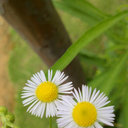Echinacoside Alleviates Hypoxic-Ischemic Brain Injury in Neonatal Rat by Enhancing Antioxidant Capacity and Inhibiting Apoptosis.
Keywords
Abstract
Hypoxic-ischemic brain damage (HIBD) is a leading cause of death and disability in neonatal or perinatal all over the world, seriously affecting children, families and society. Unfortunately, only few satisfactory therapeutic strategies have been developed. It has been demonstrated that Echinacoside (ECH), the major active component of Cistanches Herba, exerts many beneficial effects, including antioxidative, anti-apoptosis, and neuroprotective in the traditional medical practice in China. Previous research has demonstrated that ECH plays a protective effect on ischemic brain injury. This study aimed to investigate whether ECH provides neuroprotection against HIBD in neonatal rats. We subjected 120 seven-day-old Sprague-Dawley rats to cerebral hypoxia-ischemia (HI) and randomly divided into the following groups: sham group, HI group and ECH (40, 80 and 160 mg/kg, intraperitoneal) post-administration group. After 48 h of HI, 2,3,5-Triphenyltetrazolium chloride, Hematoxylin-Eosin and Nissl staining were conducted to evaluate the extent of brain damage. Superoxide dismutase (SOD), glutathione peroxidase (GSH-Px), and catalase (CAT) activities, total antioxidant capacity (T-AOC), and malondialdehyde (MDA) production were assessed to determine the antioxidant capacity of ECH. TUNEL staining and Western blot analysis was performed to respectively estimate the extent of brain cell apoptosis and the expression level of the apoptosis-related proteins caspase-3, Bax, and Bcl-2. Results showed that ECH remarkably reduced the brain infarct volume and ameliorated the histopathological damage to neurons. ECH post-administration helped recovering the antioxidant enzyme activities and decreasing the MDA production. Furthermore, ECH treatment suppressed neuronal apoptosis in the rats with HIBD was by reduced TUNEL-positive neurons, the caspase-3 levels and increased the Bcl-2/Bax ratio. These results suggested that ECH treatment was beneficial to reducing neuronal damage by attenuating oxidative stress and apoptosis in the brain under HIBD.




